Review – Iron Army T-34 vs J7 Shinden
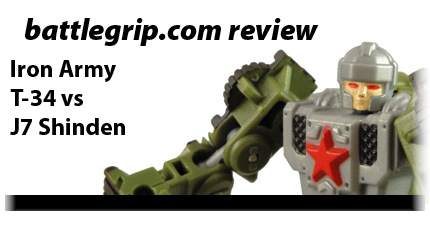
TFC Toys didn’t excite me all that much as a company with the release of their Targetroids Megashoton vs Optiaim set (review here), but once they unleashed Hercules on the world — battlegrip.com reviews: Structor review here, Heavy Labor review here, Exgraver review here and TFSource review: Neckbreaker review here — I got very excited in the company’s work. Hercules is an amazing piece of transforming robot toy art and their Iron Army set is cool, but not in the same league as Hercules.
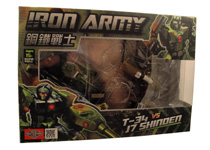
Power Core Combiners
Created and released as four small transforming robots, the two Iron Army sets are designed as WWII vehicles that transform into robots and can transform again into limbs for use with Hasbro’s Power Core Combiners series. Iron Army works best with PCC Bombshock*, but for now we’ll look at T-34 and J7 Shinden as individual robot toys and not as part of a combiner team.
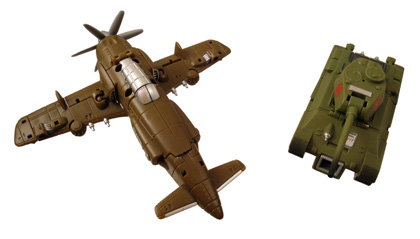
Vehicle Modes
As WWII vehicles, T-34 and J7 Shinden are Soviet and Japanese vehicles respectively, with the Soviets represented by a tank and the Japanese represented by a very unusual aircraft; the propeller is at the rear of the plane! This Wikipedia entry reports that this design was a real prototype plane during WWII that was flown and worked (though it sounds like some work was needed). Regardless of the design’s real world background it makes for one hell of a cool toy plane design.
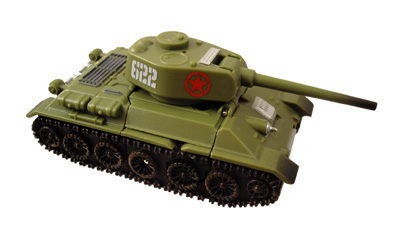
Both toys work nicely in vehicle mode with everything collapsing neatly together and leaving very few ugly seams. The plane’s front section is the worst offender in the “ugly gap” department, with the weapon — the entire front section of the plane snaps off and become’s the robot’s gun — not quite snapping perfectly into place.
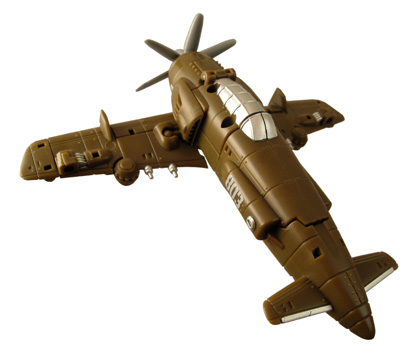
The tank’s only real ugliness is the PCC port at the front of the tank’s vehicle mode; that empty socket really begs for a plug of some sort when the toy is in vehicle mode. But overall both of these are nice vehicles and work well for what are effectively Scout-sized Transformers toys.
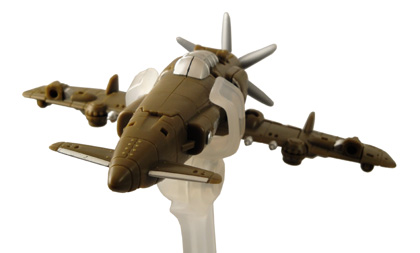
Robot Modes
Starting with the weaker of the two, the plane’s robot mode is ill-balanced and you must use the gun to help stabilize the toy. The lack of any sort of foot articulation doesn’t help; in fact, the plane has the weaker articulation with:
- Head – Swivel neck.
- Arms – Ball-jointed shoulders and hinged elbows.
- Legs – Ball-jointed hips and hinged knees.
- Torso – Swivel waist.
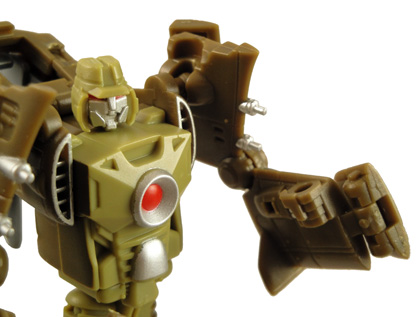
I know we should expect a lot of articulation from robots of this size — the plane stands about 3.5-inches tall — but when compared to the tank the J7 Shinden robot just doesn’t stack up. It’s okay, but when you pay $20 for each robot you want a little more articulation and fun then you get with this design.
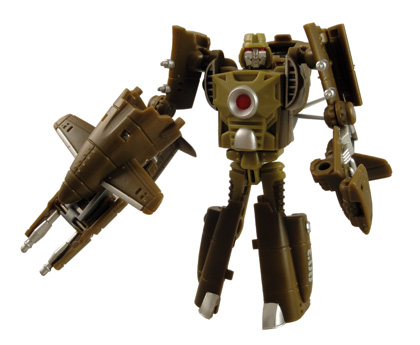
Fortunately, the T-34 tank robot is much nicer. The turret snaps off to become the robot’s hand weapon, and even though a large section of the tank’s front flips back and hangs behind the robot those big feet help keep everything balanced. And even the articulation is better:
- Head – Swivel neck.
- Arms – Ball-jointed shoulders and elbows.
- Legs – Ball-jointed hips, cut thighs, and hinged knees and toes.
- Torso – Swivel waist.
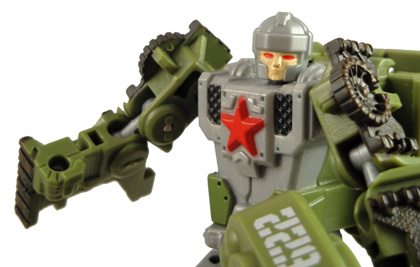
So while we don’t get a lot of extra points of articulation the joints we get are superior to the plane and the toy’s blocky feet help the entire thing to balance. Add to that the fact that I like tanks better than planes and it starts to become obvious why I’m saying the tank robot is the better of the two toys in the set. Plus, tanks are just awesome and fun.

What Inspired These?
If we go all of the way back to January of 1986 and the original Transformers cartoon we encounter the series “Starscream’s Brigade” and the first appearance of the Combaticons. In that episode Starscream uses the wrecks of WWII vehicles to create the Combaticons . . . WWII vehicles with a look similar (though not at all exact) to these toys. Now that’s an obscure source of inspiration for third party Transformers toys!
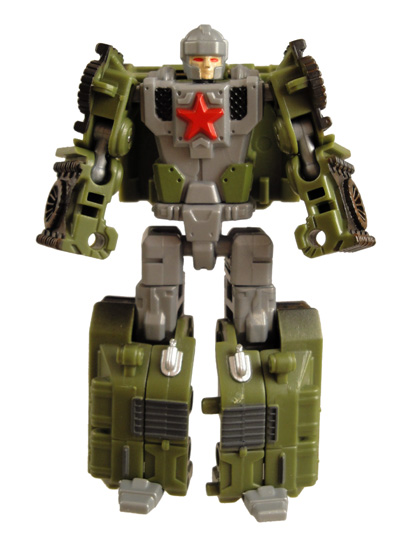
Closing Thoughts
The Iron Army robots are decent enough — and I especially like T-34 — but there’s no way that we can compare this to Hercules. These are much cheaper (less than half the cost of one Hercules robot for the set of two Iron Army robots) and that helps, but if I hadn’t ordered both Iron Army sets at once I’m not sure if I ever would have ordered the second after playing with these two robots.
A cool idea for a set, but these small robots just aren’t as exciting as I had hoped. But maybe once I combine them with the official PCC Bombshock* my opinion will change.
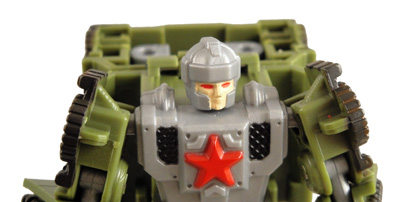
Philip Reed kinda wishes that TFC had tackled a Combaticons set the same size as Hercules instead of these little robots. A modern team of Combaticons as blocky, durable, and fun as Hercules would be awesome!
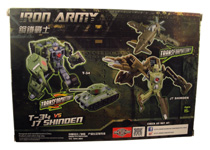
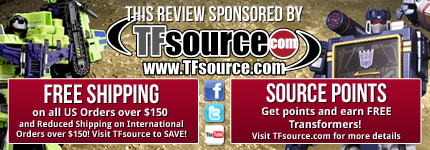
3 thoughts on “Review – Iron Army T-34 vs J7 Shinden”
Comments are closed.